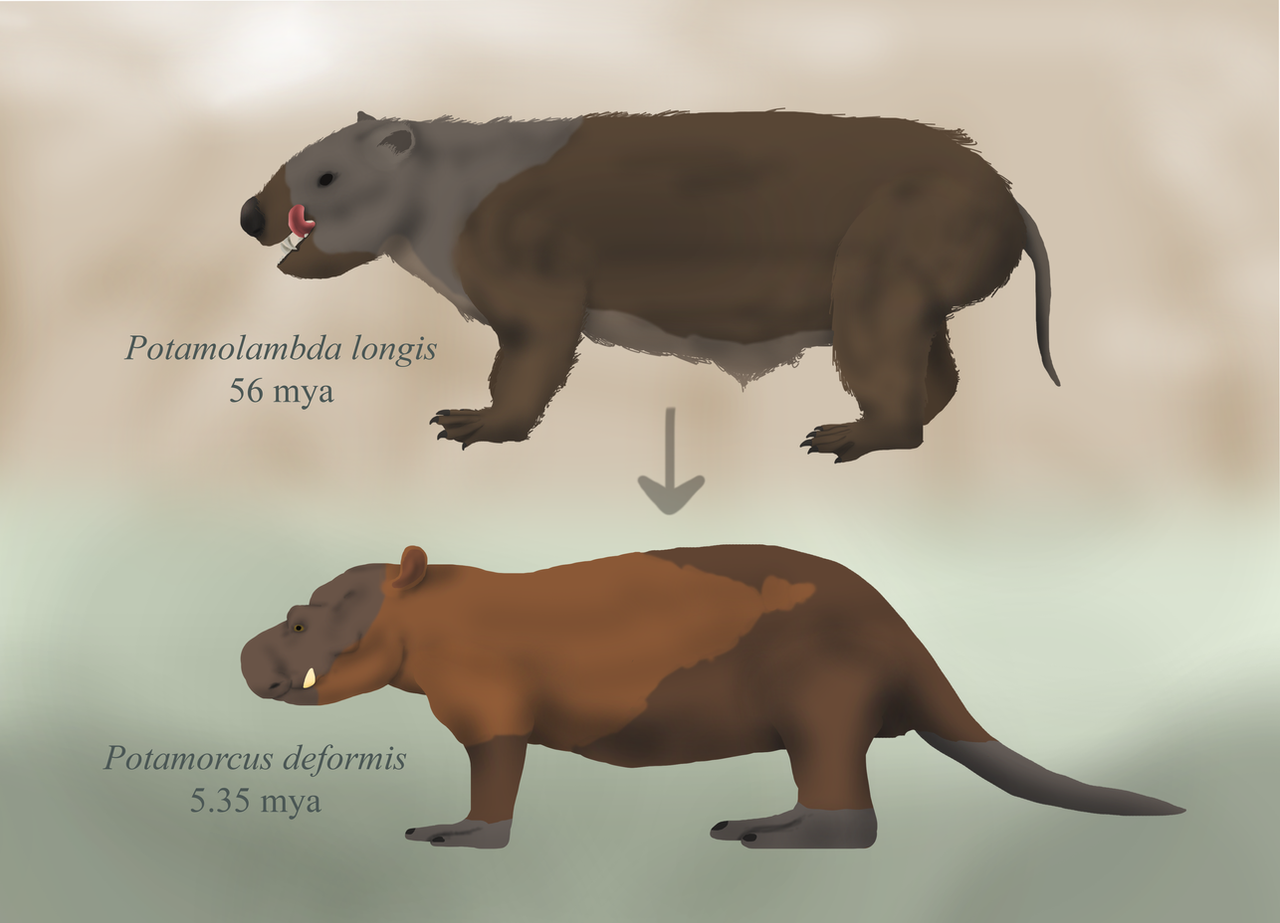HOME | DD
 YellowPanda2001 — Potamolambdids
YellowPanda2001 — Potamolambdids

#atlantisbestiary #atlantisbestiary2 #mammal #speculativeevolution #speculativebiology
Published: 2022-12-18 14:13:43 +0000 UTC; Views: 3518; Favourites: 42; Downloads: 0
Redirect to original
Description
Atlantis harboured two major lineages of pantodonts throughout its history. One of them descend from very basal pantodonts, while the other is part of the Pantolambdoidea group. These two lasted through most of the Cenozoic in this Atlantic island. The potamolambdids, usually agreed to be the basalmost of the atlantean pantolambdoids, are recorded in Paleocene and Miocene strata.Potamolambda is a pretty abundant genus in the Paleocene, characterized by a stocky build, a relatively short neck and large head, equipped with wide feet and a small tail, as well as what seems to be the structure for a bulbous front nose, and two pairs of large canines. It is believed they were semi-aquatic and gregarious, in many ways similar to modern capibaras.
Over 50 million years later, in the latest Miocene, Potamorcus deformis is recorded. This peculiar species has many exaggerated features that come from an increased specialization for underwater locomotion. Wide paddle-like feet, with only three remaining digits in each foot, are very indicative of their extreme specializations to swim. Its tail has returned to a much larger size, however, to aid in underwater steering, like an otter. Its eyes are now positioned further up the skull, similarly to an hippo, to see things at the surface of the water. It retained a similar size to Potamolambda, and like it, it was a specialized herbivore. It had a tightly packed skull, with a larger frontal surface that suggests a very bulbous and fleshy nose, perhaps flexible and trunk-like, like an elephant seal's. Fossils of these suggest there was sexual dimorphism between the males and females, with males possessing signs of having had a larger nose, and also having larger tusks for intraspecific combat. Its canines were oddly placed further back into the jaw, with its lower canines larger than its very reduced upper canines. It had large incisors to strip off plant material and a tight pack of post-canine teeth to grind the vegetation it consumed, with powerful muscles to aid in that task. It lived in freshwater and brackish swamps of the island.
Potamorcus deformis is an official submission by Triloboii for Atlantis Phase II.
Related content
Comments: 5

👍: 0 ⏩: 1

👍: 0 ⏩: 1

👍: 0 ⏩: 1

👍: 0 ⏩: 1

👍: 0 ⏩: 0























